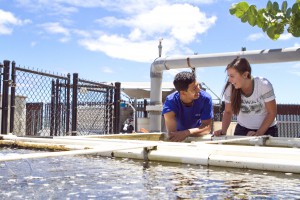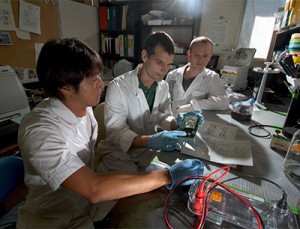Overview
The University of Hawaiʻi at Mānoa (UH Mānoa) is a research university of international standing. It creates, refines, disseminates, and perpetuates human knowledge; offers a comprehensive array of undergraduate, graduate, and professional degrees through the doctoral level, including law and medicine; carries out advanced research; and extends services to the community. Students have special opportunities for Asian, Pacific, and Hawaiian educational experiences and involvement in research activities, service learning, and co-curricular activities.

UH Mānoa has widely recognized strengths in tropical agriculture, tropical medicine, oceanography, astronomy, electrical engineering, volcanology, evolutionary biology, comparative philosophy, comparative religion, Hawaiian studies, Asian studies, Pacific Islands studies, and Asian and Pacific region public health. UH Mānoa offers instruction in more languages than any U.S. institution outside the Department of State. The main UH campus located in Mānoa valley on the island of Oʻahu began in 1907 as a land-grant college of agriculture and mechanic arts. With the addition of a College of Arts and Sciences in 1920, the college became the University of Hawaiʻi. In 1972, it became UH Mānoa to distinguish it from the other units in the growing UH System.

Today, nearly 20,000 students are enrolled in UH Mānoa courses, on campus or via distance delivery, studying toward bachelor’s degrees in 99 fields of study, master’s degrees in 87, doctorates in 57, first professional degrees in architecture, law, and medicine, and a total of 70 undergraduate and graduate certificates. UH Mānoa also offers 3 post-baccalaureate certificates. There are 316 degrees and certificates offered. In addition, 74 percent of UH Mānoa students are undergraduates, 59 percent are women, and 73 percent attend school full-time. The mean age of students is 22.
The beauty of Mānoa valley serves as a backdrop for a unique yet inviting campus. Wander through the campus and find an authentic Japanese tea house and garden located on East-West Center grounds, a studies center that is a replica of a Korean king’s throne hall, and a Hawaiian taro patch. Other structures include Student Recreation Center on campus and a privately donated marine biology facility on Coconut Island.
UH Mānoa is accredited by the Accrediting Commission for Senior Colleges and Universities of the Western Association of Schools and Colleges. Professional programs are individually accredited by appropriate agencies. A popular campus symbol is the rainbow, a frequent sight in Mānoa valley. Green and white are UH Mānoa’s colors.
Excerpted from the Mānoa General Catalog 2022–2023


